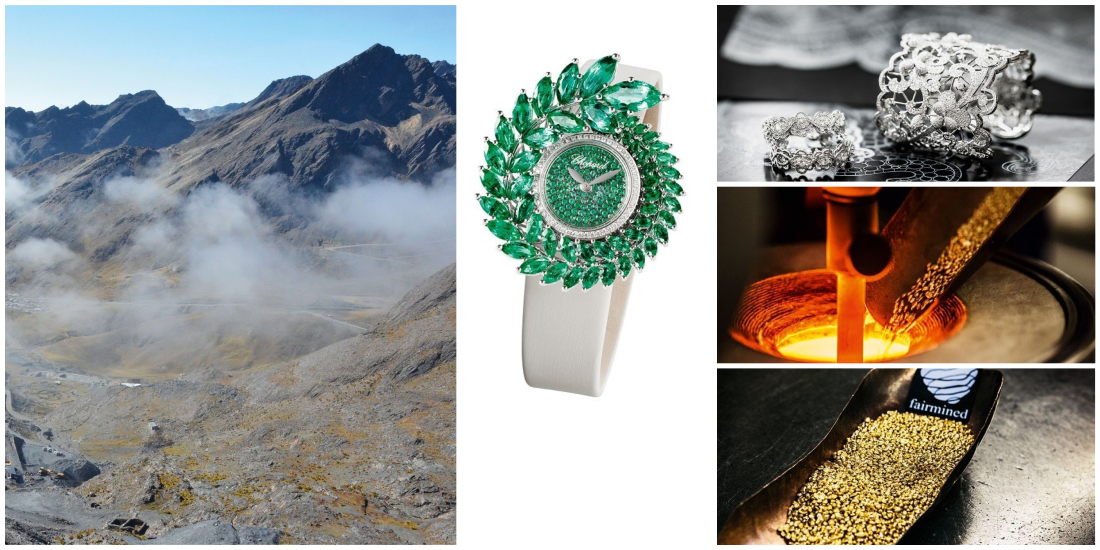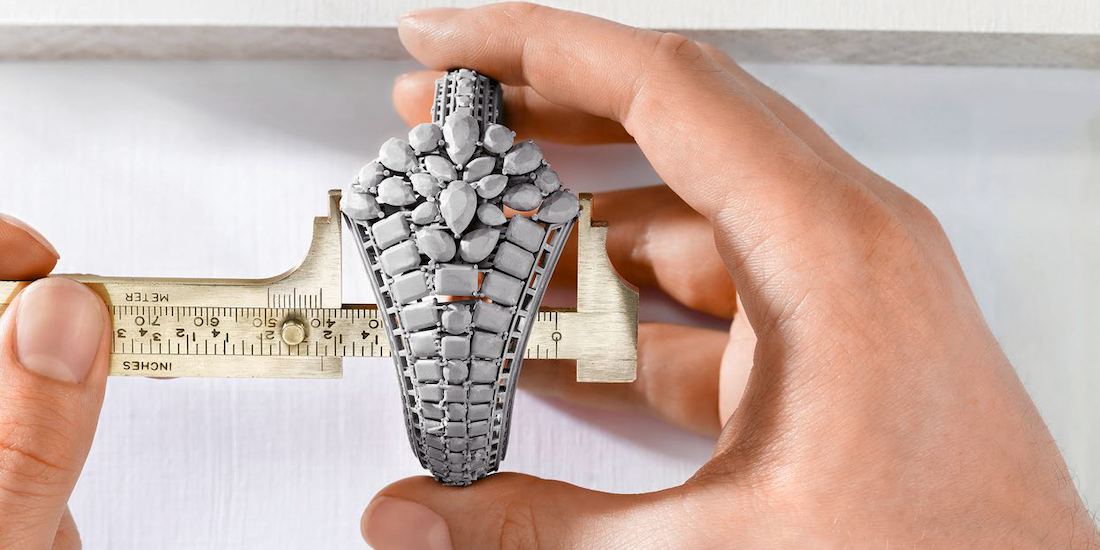
When shopping for a beautiful piece of high jewelry or a bejeweled watch, clients today are looking beyond carats and craftsmanship. Many are demanding the assurance that the object of their desires did not displace indigenous communities, pollute waterways, impose inhumane working conditions, or engage child labor. “Going green” begins with ensuring traceability and a verifiable chain of custody of precious materials, responsibilities that the luxury industry must confront today. Chopard, long admired for its high jewelry and watchmaking tradition, is tackling sustainability head on. In an announcement made last March, the Swiss jewelry house committed to producing all of its jewelry and watch collections with 100 percent ethical gold starting in July 2018. “We are proud to say that all our gold will be purchased from responsible sources” said Karl-Friedrich Scheufele, co-president of Chopard. “It is a bold commitment, but one that we must pursue to make a difference to the lives of people who make our business possible.” Chopard has now assumed a leading role in reducing the environmental and humanitarian impact of its operations – from mine to market – as it guarantees “clean” precious metals to its clients. “Fairmined” refers to gold extracted by small-scale miners certified with the standard created by the Alliance for Responsible Mining. Chopard has committed to using “Fairmined gold” from only two sources : small mines verified by the Swiss Better Gold Association or from refineries certified as meeting the Responsible Jewellery Council’s Chain of Custody Standard, widely regarded as imposing strict environmental and social guidelines. “True luxury comes only when you know the handprint of your supply chain,” said Caroline Scheufele, co-president and creative director of Chopard. “I am proud to share the stories behind each beautiful piece with our customers and know they will wear these stories with pride.”
CHOPARD’S HAUTE JOAILLERIE GOES GREEN
Chopard’s Green Carpet Haute Joaillerie collection, the first of its kind to be ethically produced since 2013, is augmented each year with stunning new pieces, including this year, which saw the introduction of two necklaces and earrings in diamond lacework motifs radiating a contemporary appeal. According to Chopard : “The feminine designs of the Green Carpet collection are fresh and original, intended for daily wear by the modern woman.” Chopard extended its “green” commitment to precious stones in 2016 when it partnered with Gemfields, a supplier of ethical gemstones, enabling the Maison to create a stunning jewelry timepiece set with marquise and round-cut emeralds ethically mined in Zambia. Improving the lives of those who toil in the luxury industry has been a focus of the Oscar-winning actor, Colin Firth, and his wife Livia, founder of the Green Carpet Challenge and creative director of Eco-Age, both long-term advocates of Chopard’s green commitment. “The story of a watch is very much to do with hands,” Mr Firth said. “There are hands that mine the ground for gold, which passes through the hands of the craftsmen who make the watch, which then passes into the hands of the person who’s going to wear it.”
GLAMOUR IS NOW EMERALD GREEN
Every spring, Chopard takes its Green Carpet collection on the global stage at the Cannes Film Festival. The Festival’s trophy, known as the Palme d’or, is also a visible symbol of Chopard’s green orientation. Crafted by the Maison in ethical gold since 2014, the feathery palm rests on a rock crystal cushion shaped like an emerald-cut diamond. Ms Scheufele says she is “proud that the Palme d’or is made of traceable gold mined in a manner respectful of human beings and the environment.” Chopard’s Green Carpet glamour is best embodied by the women who wear it well, like Cate Blanchett seen sporting her diamond earrings at the Golden Globe awards, Julianne Moore in her remarkable emerald earrings and ring set, and Marion Cotillard who has collaborated in designing pieces for the Green Carpet collection.
A 30-YEAR MARRIAGE OF ETHICS AND AESTHETICS
For Chopard, owned by the Scheufele family since 1963, the commitment to ethical production is the culmination of a 30-year strategy of vertical integration. As Mr Scheufele explains : “More than 30 years ago, we developed a vertically integrated in-house production, and invested in mastering all crafts internally, including by bringing in skilled high jewelry artisans and expert watchmakers.” Vertical integration has enabled Chopard to control its production processes and assume a pioneering role in the industry in ways that help real people engaged in its supply chain. Ms Scheufele is keen to point out that “ethics have always been an important part of our family philosophy and we have naturally placed ethical concerns at the heart of the Chopard values.”





